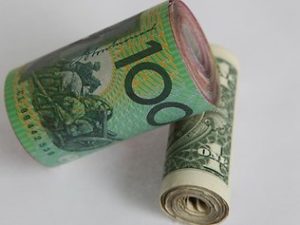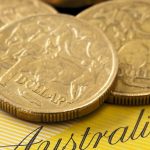 Australian dollar rose to highs unseen in one month against its US counterpart during late US session on Friday, after the keenly anticipated non-farm payrolls report introduced disappointment, which may urge the Federal Reserve Bank to reconsider the pace of scaling back its monetary stimulus.
Australian dollar rose to highs unseen in one month against its US counterpart during late US session on Friday, after the keenly anticipated non-farm payrolls report introduced disappointment, which may urge the Federal Reserve Bank to reconsider the pace of scaling back its monetary stimulus.
AUD/USD advanced to a session high at 0.9005 at 20:35 GMT, also the pairs highest point since December 12th, after which it closed at 0.8996 on Friday, surging 1.10% for the day. Support was likely to be received at January 9th low, 0.8866, while resistance was to be encountered at December 12th high, 0.9082.
Yesterday it became clear that US private sector added only 74 000 new job positions in December, which marked the slowest rate of increase in nations employment since the beginning of 2011. This result suggested that US labor market might have lost some of its momentum and may also demonstrate a weaker performance than other economic indicators implied at the start of the new year. Hiring appeared to be weak in almost all sectors. Experts had expected that US economy will add 195 000 jobs in December, while the number of non-farm payrolls was 203 000 in November.
On the other hand, the rate of unemployment in the country dropped significantly, reaching 6.7% in December from 7.0% in the preceding month, which marked the lowest rate since October 2008. However, this came as a result of a larger percentage of US citizens leaving nations work force. Preliminary estimates pointed that US unemployment rate will remain unchanged in December.
Average hourly earnings in the country increased 0.1% last month, after another 0.2% climb in November compared to October.
On Wednesday the minutes of Federal Reserve Banks policy meeting on December 17th-18th revealed decreasing economic benefits from the bond-purchasing program, which increased bets that Fed policy makers might extend reductions in their monetary stimulus program in the near future.
The Federal Reserve said on December 18th that it will reduce its monthly bond purchases in January to $75 billion from $85 billion. The central bank will probably trim buying in $10 billion increments over the next seven meetings before ending them in December, according to the median estimate of economists.
“The basic themes the market started the year with, related to solid U.S. growth inclusive of bond normalization and selective USD strength, are likely to stand the test of time,” Alan Ruskin, the New York-based global head of Group of 10 foreign-exchange at Deutsche Bank AG, the world’s largest currency trader, wrote in a note to clients, cited by Bloomberg. The payrolls “number will ultimately be seen as providing better entry levels for these core views, but this is obviously going to be a bumpy ride.”
The yield on US benchmark 10-year bonds plunged 14 basis points, or 0.14 percentage point, to reach 2.86% this week. The yield on nations two-year bonds fell three basis points to reach 0.37%.
Meanwhile, in Australia, the Housing Industry Association (HIA) reported that new home sales rose 7.5% in November compared to October, or the fastest pace in the past four years, following a 3.8% decrease in the preceding month. This came as another evidence that record low borrowing costs are supporting other sectors of Australian economy, after investment boom in mining has faded.
The yield on Australian benchmark 10-year government bonds fell five basis points, or 0.05 percentage point, from Thursday to reach 4.27%. The yield has decreased eight basis points since January 3rd.
Traders saw a 19% probability that the Reserve Bank of Australia (RBA) will introduce a reduction of its benchmark interest rate by its policy meeting in June, according to swaps data. On Thursday the odds of such a move were 23%.
Elsewhere, having touched a session low at 1.5174 at 20:35 GMT, EUR/AUD cross closed at 1.5196 on Friday, falling 0.63%. In addition, AUD/NZD pair closed at 1.0836 yesterday, gaining 0.51% on a daily basis.





